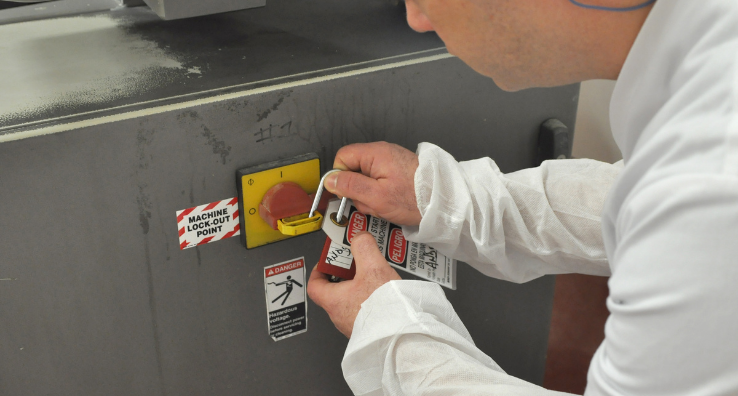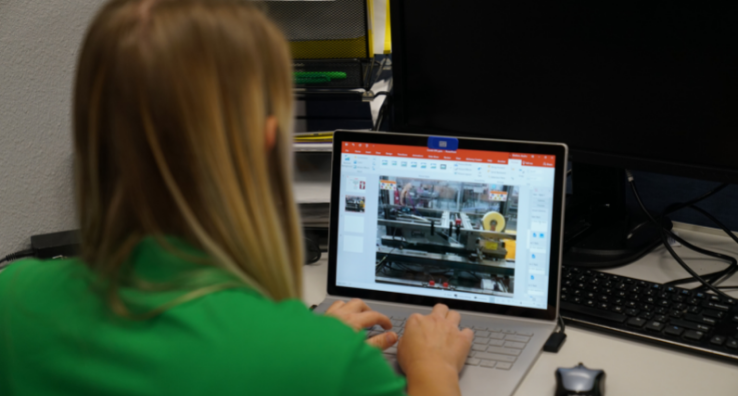8 Courses to Take Now to Protect Employees from Common Threats

Keeping employees safe on the job is tough, especially when you consider all the variables. Employee turnover, evolving health guidelines, and changing work conditions can make it difficult to know where to apply your best defenses at any given time.
If you’re a work safety professional, you’re constantly on the lookout for potential exposures and implementing safeguards. But what and where are the greatest risks in your environment?
One way of revealing your exposure level is to look at the most frequent OSHA violations to see where others might be faltering. We covered this in a previous blog: OSHA’s 7 Elements to Creating a Safe and Healthy Workplace. Another way is to partner with an outside source to conduct a safety audit.
But sometimes you just want to know what your peers are doing. We can offer a peek in this window by looking at the most common safety courses our clients use with employees. These courses show us where workplace safety professionals have the greatest concerns and need the most help.
Intertek Alchemy offers more than 69 Environmental Health and Safety interactive courses with gamification, quizzes, group competitions, and remediation loops that increase employee knowledge and retention. We provide many of these courses in a variety of languages including Spanish, Burmese, Somali, English, French, and Vietnamese.
Here’s where our clients are focusing the majority of their attention on education and training.
Exposure to Bloodborne Pathogens
Bloodborne pathogens are harmful microorganisms that can be spread through contact with contaminated blood and body fluids. Frontline workers can be exposed to these pathogens in several ways, which our course identifies along with recommended universal prevention measures. We also cover the basic steps to take if exposed to a bloodborne pathogen and how exposures can occur.
Preparation for Emergencies
Hurricane season is just around the corner. But severe weather already plagues major parts of the country. High winds, tornados, and floods strike with very little notice. To help prepare for the unexpected, manufacturers are creating emergency action plans to facilitate and organize employer and employee actions during a workplace emergency. Clients take this course to learn the basic elements of an emergency action plan, evacuation procedures, and to teach employees how to shelter in place during an emergency.
Hearing Protection
The level of noise from machinery and equipment can be very high in manufacturing or processing environments. Long-term exposure to these high noise levels can cause significant hearing loss. The Center for Disease Control (CDC) estimates 22 million workers are exposed to potentially damaging noises at work each year. Regardless of the work environment, hearing loss is preventable.
We like to help clients understand the importance of hearing protection with an overview of the different types of hearing protection. Our course helps employers identify the most common types of hearing protection including earplugs and hearing bands and how to train employees to use them.
Lockout/Tagout Procedures
Equipment being cleaned, adjusted, or maintained, can trigger a lockout/tagout procedure that must be followed to prevent the equipment from being used and releasing dangerous energy. If the energy from this equipment is not properly controlled, employees can be seriously injured or killed. According to OSHA, craft workers, machine operators, and laborers are among 3 million workers who service equipment and face the greatest risk.
Compliance with the lockout/ tagout standard prevents an estimated 120 fatalities and 50,000 injuries each year. Workers injured on the job from exposure to hazardous energy lose an average of 24 workdays for recuperation. Our course covers the importance of lockout/tagout, and how following procedures can help prevent injuries and work-related deaths. It also covers some of the hazardous energy sources in a facility.
Machine Guarding
Machine guards prevent injuries by preventing contact with dangerous moving equipment parts. This course introduces some of the most common types of machine guards and machine safety devices. It also covers employee responsibilities when working with machines and discusses how to help keep hands safe at work. We help students understand the different types of machine guards and their purposes. We also demonstrate the types of safety devices and why they’re needed.
Personal Protective Equipment
The pandemic helped create awareness around the importance of personal protective equipment (PPE). But we know there is much more to consider than masks. OSHA defines PPE as equipment worn to minimize exposure to hazards that cause serious workplace injuries and illnesses. PPE can include gloves, safety glasses and shoes, earplugs or muffs, hard hats, respirators, coveralls, vests, full body suits, and other such items. In our course, we survey common types of PPE and the dangers they can prevent.
Slips, Trips, and Falls
Slips, trips, and falls in the workplace are responsible for nearly 16 million injuries each year. They are the second leading cause of fatalities on the job and the third leading cause of employee disability. Last year, slips, trips, and falls played a major role in more than 84% of all non-fatal injuries involving days away from work. And they remain among the most common reasons for lawsuits, OSHA penalties, and hits on productivity. This course explains how slips, trips, and falls can occur inside or outside a facility and looks at how to prevent them.
Active Shooter Readiness
While no one likes to think it can happen at their job, workplaces are one of the most frequent targets of active shooters. That’s why it’s essential to be prepared for the worst-case scenario. This course offers tips on how to prepare for an active shooter incident, how to respond if it does occur, and what to do after an incident.
These are the most frequent eight courses our clients take, which should give you an idea of what they consider to be the most prevalent threats to address. If you’d like to hear more about these courses or discuss a curriculum that’s right for you, please contact us.





